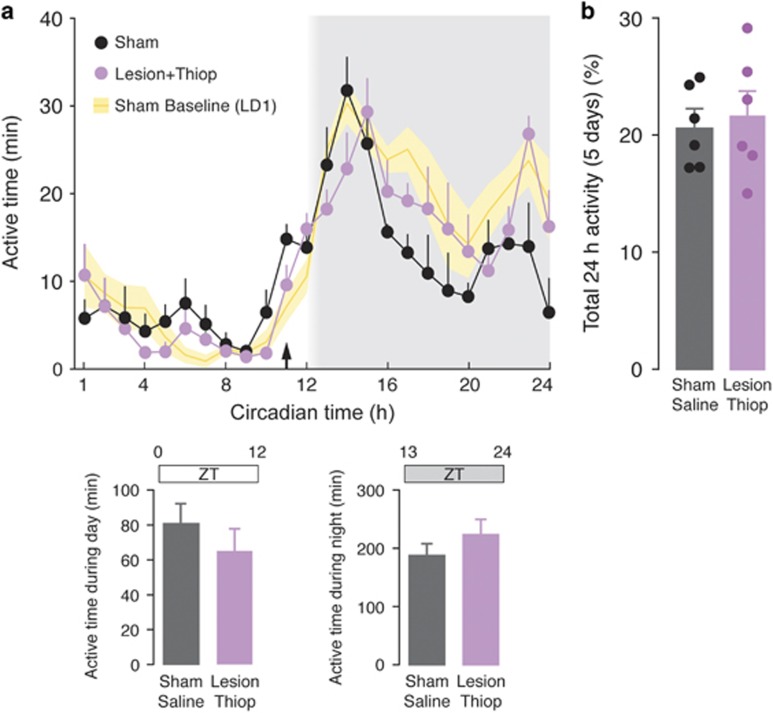Figure 3.
Effect of thioperamide on impaired nighttime activity caused by 6-OHDA. (a) Average activity for control (sham) mice and 6-OHDA-lesion mice treated with thioperamide (20 mg kg−1) measured during 5 days following re-entrainment from constant darkness (DD) period (cf. Figure 1a). Daily administration of thioperamide 1 h before darkness (ZT11; arrow) re-establishes normal nighttime activity in 6-OHDA-lesion mice. Shading indicates darkness in reference to ZT time (h). Activity in sham mice observed during the LD1 period (cf. Figure 1a) is also shown for comparison (yellow area). Lower bar graphs show active time during day (ZT0–ZT12) and night (ZT13–ZT24) in sham and lesion mice. Note the similar activity in sham and lesion mice treated with thioperamide during the night cycle. Data are expressed as means±s.e.m. (b) Bar graph showing active time during the course of the experiment. Data represent percentage of active time over total time and are expressed as means±s.e.m. 6-OHDA, 6-hydroxydopamine; LD, light/dark.

